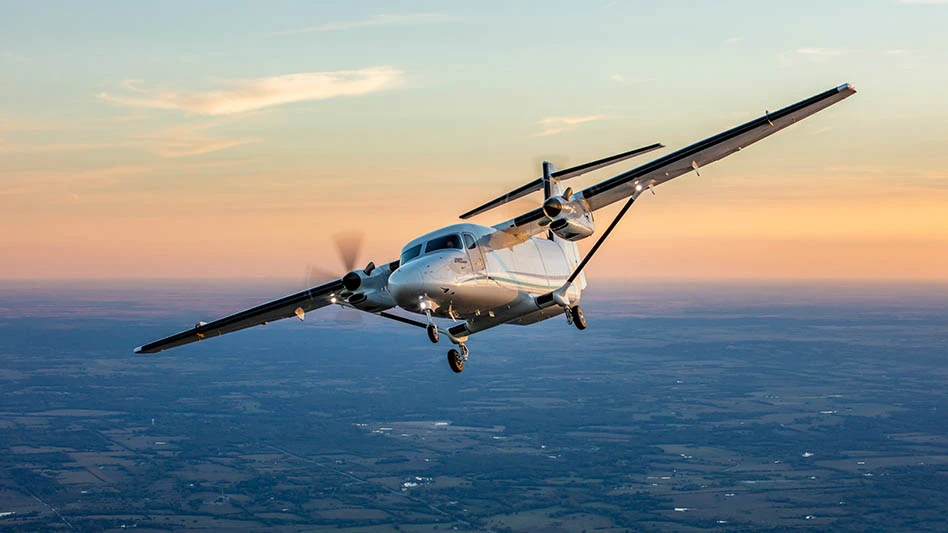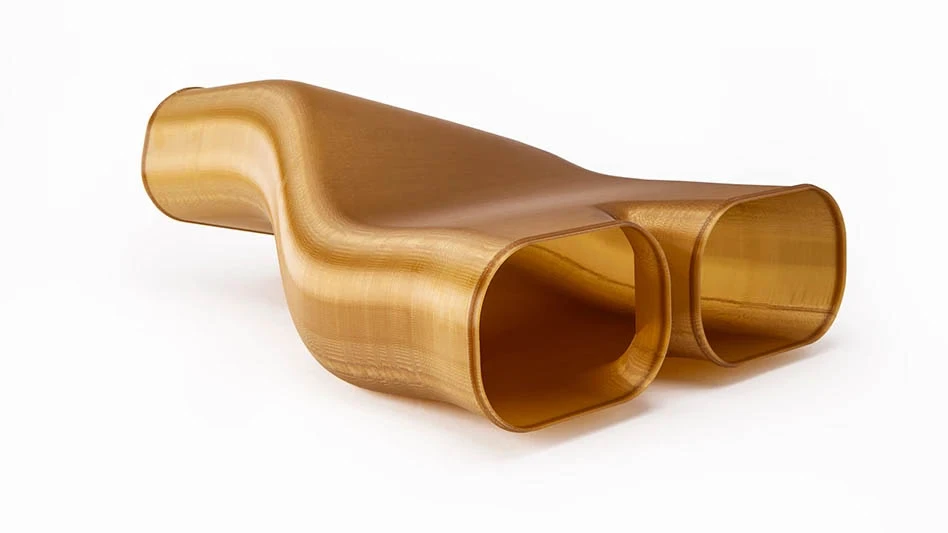
You’ve been tasked with machining a one-of-a-kind workpiece worth millions of dollars. Months of careful planning have gone into development, human lives depend on it working properly, and just one mistake could set the United States space program back by years. You cross your fingers, push the green button, and hope.
For George Hernandez, a CNC programmer at Aerojet Rocketdyne, and other members of his team, nothing is left to chance. When the stakes are this high, mistakes are simply unacceptable.
To ensure success, the Sacramento, California-based manufacturer teamed with Fair Lawn, New Jersey-based Sandvik Coromant Co. for cutting tools and help developing the machining processes for the main combustion chamber (MCC) of the RS-25 rocket engine.
Resurrecting an old friend
If you’ve seen a launch of the Space Shuttle, you’ve seen a version of the Aerojet Rocketdyne RS-25 engine in action. The liquid-fuel engine can produce more than 400,000 lb of thrust (181,000kg), operating at temperatures up to 6,000°F (3,300°C), and was the workhorse of NASA’s shuttle program throughout its 30-year history.
After Atlantis’ final flight in July 2011, it seemed the RS-25 was headed for retirement, but a few months later the U.S. government charged NASA with development of the Space Launch System (SLS) with the goal of sending humans back to the moon, and ultimately, Mars.
Hernandez didn’t work on those earlier versions of the RS-25, but he and an entire team of Aerojet Rocketdyne manufacturing specialists are married to the SLS project. Astronaut Butch Wilmore even presented lead engineer Steve Fonteyne with the Silver Snoopy, a sterling silver lapel pin that has flown on a Space Shuttle mission and is one of the most coveted of all NASA awards, symbolizing the intent and spirit of space flight awareness.
Derek Smith was an integral part of the team. A senior process specialist and CAM programmer for the Customized Solutions - Aerospace team at Sandvik Coromant, he worked with Hernandez and the others on the shop floor for nearly five months as they brought the project to fruition, assisting with tooling selection, process development, and programming and simulation of the machine tool used for final MCC machining.

A challenging liftoff
This wasn’t just machining a difficult and expensive workpiece. New engine requirements meant new equipment, software, and tooling. The first of these was a 5-axis, DMU 80 FD duoBLOCK universal machining center from DMG MORI, purchased for the MCC. Though Aerojet Rocketdyne engineers know 5-axis machining, the DMU’s control and unique construction presented one more hurdle in an already challenging project.
Machine programming software was another hurdle. Aerojet Rocketdyne recently became a customer of CNC Software Inc., Tolland, Connecticut, and had to ramp up on their new Mastercam NC programming system while developing a new post-processor for the DMU. The team also had to develop a 3D model of the DMU for use with its Vericut software system – a toolpath simulation, verification, and optimization utility from Irvine, California-based CGTech Inc.
But the icing on the metal cake was the MCC’s material – a proprietary, high- temperature superalloy with high nickel and chromium content. It’s like the well-known, difficult-to-machine Inconel 718, “only a lot worse.”
Because the material was somewhat unknown at that point, Aerojet Rocketdyne supplied Smith with samples, which he took back to Sandvik Coromant’s facility in New Jersey for test cuts using different carbide grades and insert geometries.
“That way I knew what to expect before writing the programs,” Smith explains. He also experimented with toolholding because, “One of the biggest challenges we faced was the extreme length of the tools needed to reach inside the MCC. It’s here that we leveraged Sandvik Coromant’s Capto tooling system, not so much for its quick-change capabilities, but for its rigidity. The same can be said for the Silent Tools, which we used wherever possible to eliminate chatter and improve tool life.”

one of the company’s many rocket engines.
Building relationships
The many obstacles that came with the MCC were typical for Aerojet Rocketdyne, a company that has been tackling difficult projects throughout its history. Since its founding in the early 1940s, the company has been at the forefront of propulsion technology – if it goes into space, chances are excellent that it got there courtesy of Aerojet Rocketdyne.
What’s most notable about this current project isn’t Aerojet Rocketdyne’s history; nor the machining technology it uses to produce rocket engines. It’s the teamwork that went into making the MCC.
Hernandez says, “We had to do everything from scratch – the tooling and setup sheets, the post-processor, the models for Vericut, and a new style of machine that we’d never used before. On top of all that, we had a very tight deadline. We relied on Sandvik Coromant together with our other business partners, CGTech and CNC Software, to help get it all done on time, with no mistakes.”
Jim Courtney, technical sales representative for Sandvik Coromant, has been calling on Aerojet Rocketdyne for the past 15 years, and was involved in a similar, successful project with them in 2012.
“We helped them reduce cycle time significantly on a component they were preparing to outsource – not only did this allow them to keep it in-house, but they also avoided investing in several new machine tools,” Courtney explains. “They’ve since refined the process even further and brought several sister parts in-house.”

Stand at Stennis Space Center in preparation for a hot-fire series to support NASA’s Space Launch System
(SLS) program.
Ready for liftoff
Though the manufacturing specifics remain proprietary, Hernandez says everything went off without a hitch. Aerojet Rocketdyne achieved “some really amazing tool life” with the Sandvik Coromant tooling, despite the long tool overhangs and the supreme toughness of the mystery material.
Mastercam’s Dynamic Milling feature helped extend tool life while reducing cycle time, and CGTech’s Vericut toolpath simulation gave everyone the confidence needed to push the green button on a machine- cycle months in the making.
Hernandez and the team pulled the completed MCC off the DMU in March 2018. After final testing and inspection, the hardware was shipped to Stennis Space Center in Mississippi, where the MCC was assembled onto the re-designed RS-25 engine. The engine has since successfully completed early full-scale ground tests, performing better than expected. Smith attributes much of this success to Hernandez, adding, “This project could never have happened without him. On many occasions, George was here from early morning until late at night, weekends...He went out of his way to make things happen and help assure that we got it done on time.”
For Hernandez, the feelings are mutual. “The service we received from Sandvik Coromant was excellent,” he says. “They did everything we asked of them and more, within our deadline, and Derek was there for us whenever we needed him. He, as well as everyone else on our team, did a magnificent job.”
Aerojet Rocketdyne
CGTech
CNC Software Inc.
DMG MORI
Sandvik Coromant

Explore the March 2019 Issue
Check out more from this issue and find your next story to read.
Latest from Aerospace Manufacturing and Design
- NASA selects instruments for Artemis lunar terrain vehicle
- Twin-cutter boring head
- Bell awarded funding for X-plane build phase of SPRINT program
- Shaft coupling clamps
- #46 Lunch + Learn Podcast with SMW Autoblok
- Gleason Corp. acquires the Intra Group of Companies
- Thread milling cutter reduces cutting pressure, vibration
- Malaysia Aviation Group orders 20 more Airbus A330neo widebodies





